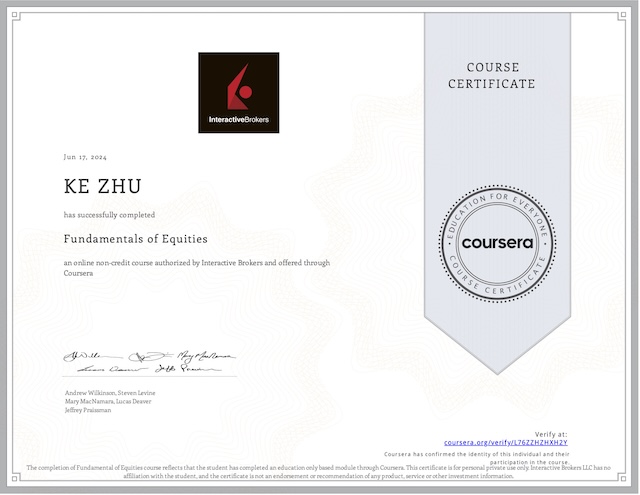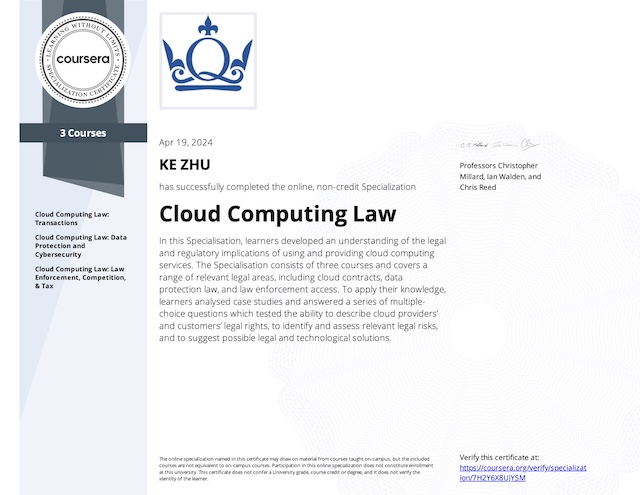A stock redemption occurs when a shareholder sells stock back to the issuing corporation for cash or property. A redemption raises many important and potentially complex tax issues. If the shareholder who redeem stocks is the only shareholder, a stock redemption has no effect on his proportionate ownership interest in the corporation. In this case, if this redemption were treated as a stock sale for tax purposes, this transaction looks an awful lot like a dividend.
Therefore, if all redemptions were treated as sales or exchange of stock, shareholders could simply redeem their shares whenever dividends are desired. The corporation could then issue non-taxable stock dividends to replenish investor shares as needed. This potentially circumvents the double taxation of corporate dividends, and will undermine double-tax regime and reduces Federal tax revenue.
There is a federal tax distinction between:
- Redemptions having the effect of a dividend, that is transactions
- Enable shareholders to withdraw cash or other property
- Leave shareholder’s proportionate ownership interest intact
- Redemptions that are sales because they substantially
- Reduce shareholder’s proportionate ownership interest
Stock Attribution Rules
Recall the tests that are used to determine eligibility of Qualified Redemptions. Actually they are applied after considering intricate Stock Attribution Rules defined in §318. These rules determine if a shareholder constructively own stocks that is actually owned by a related party. This is an important issue because most qualified stock redemptions are concerned with whether there was a substantial reduction in the shareholders proportionate ownership interest.
Congress believe that an individual or business entity should be deemed as owning shares of stock that are actually owned by family members and related entities under §318. Because, without Stock Attribution Rules, a shareholder could easily reduce legal ownership without sacrificing real ownership.
§318 applies when it is expressly made applicable by another section. There are four categories of attribution:
| Family | An individual is deemed to own stock owned by his or her spouse, children, grandchildren and parents. Siblings, aunts, uncles, and in-laws are not included. No attribution from grandparent to grandchild. This rule can be waived sometimes. |
| Partnership | A partner is deemed to own stock owned by a partnership to the extent of the partner’s proportionate interest in the partnership. Stock owned by a partner is deemed to be owned in full by the partnership. |
| Corporation | Stock owned by a corporation is deemed to be owned proportionately by any shareholder owning 50% or more of the corporation’s stock. Stock owned by a shareholder who owns 50% or more of a corporation is deemed to be owned in full by the corporation. |
| Estate or trust | A beneficiary or heir is deemed to own the stock by an estate or trust to the extent of the beneficiary’s or heir’s proportionate interest in the estate or trust. Stock owned by a beneficiary or heir is deemed to be owned in full by the estate or trust. |
Examples
Example: Corp A has 100 shares of stock outstanding in the following manner:
| Relatives | Entities |
| Person A: 10 Spouse: 10 Son: 10 Mother: 10 Brother: 10 Uncle: 10 | Partnership B: 10 (Person A owns 10%) Corp C: 10 (Person A owns 40%) Corp D: 10 (Person A owns 50%) Corp E: 10 (Person A owns 80%) |
Assuming no cross-ownership among relatives or entities, how much stock is Person A deemed to own under §318?
Person A 10
+ Spouse 10
+ Son 10
+ Mother 10
+ Brother 0
+ Uncle 0
+ Partnership B 1
+ Corp C 0
+ Corp D 5
+ Corp E 8
= 54Shareholder Tax Treatment of Redemptions
Stock redemptions are used for various corporate and shareholder objectives, which generally depend on whether the corporation is closely or publicly held:
- Closely held corporation (usually with few shareholders):
- Modify corporate control
- Buy-out deceased or dissident shareholders
- Provide liquidity to shareholders wishing to diversify their investment holdings
- Pay estate taxes
- Publicly held corporation:
- Increase stock price
- Prevent a takeover
- Retire stock
- Become non-publicly held
Qualified Redemptions
In the past, the tax treatment of a stock redemption was determined by a Dividend Equivalency Rule. However, as with most facts and circumstances based test in the code, evaluating dividend equivalency was highly subjective and uncertain.
Congress enacted code §302, which are concerned with substantial reductions in ownership interest, to more objectively determine whether a stock redemption is treated as a dividend. This statute stipulates that if stock is redeemed in a specified manner, it can qualify for sale or exchange treatment.
There are currently five types of qualified redemptions. Each type involves a unique test to determine eligibility.
| Types | Test |
| 1. Redemptions not equivalent to dividends 2. Disproportionate redemptions 3. Complete termination redemptions | Examine whether there was a substantial reduction in the shareholder’s proportionate ownership interests after the redemption. |
| 4. Redemptions in partial liquidation | Gauge whether there was a reduction in the distributing corporation’s business operations |
| 5. Redemptions by regulated investment companies | Only apply to a specialized industry |
All qualifying stock redemptions received sale or exchange tax treatment. Such treatment provides:
- Tax-free recovery of stock basis
- Capital character gains and losses (which can offset one another).
- Preferential tax rates of 0%, 15%, or 20% may apply for long term capital gains (depending on an individual shareholder’s marginal tax bracket).
- The shareholder also receives a fair market value basis for any property received.
Redemptions Not Equivalent to Dividends
US Supreme Court held that a stock redemption is not essentially equivalent to a dividend, only when the shareholder’s interest in the corporation has been meaningfully reduced. The concept meaningful reduction is defined as:
- Decrease in voting control
- Reduction in right to share earnings or receive corporate asset upon liquidation
Code §302(b)(1) states that sale or exchange tax treatment shall apply if the redemption is not essentially equivalent to a dividend. This rule is a continuation of the Dividend Equivalency Rule, under prior law mentioned earlier. Despite its lack of objectivity, it remains in the code for redemptions of preferred stock which shareholders typically have no control over.
Disproportionate Redemptions
Code §302(b)(2) states that a sale or exchange treatment shall apply if a redemption is substantially disproportionate with respect to the shareholder, which involves two conditions:
- After redemption, shareholder owns less than 80% of interest owned in the corporation before the redemption, AND
- After redemption, shareholder owns less than 50% of total combined voting power of all voting power.
If a particular redemption does not qualify as a “Disproportionate redemption” under §302(b)(2), it could still qualify as “Not essentially equivalent redemption” under §302(b)(1) if the meaningful reduction test is satisfied.
Examples
Person A, B and C are unrelated individuals who own all of the stock in Corp Z, which has E&P of $1.2 million. Person A owns 1500 shares, B owns 300 shares, C owns 200 shares. Assume Corp Z redeems 900 of Person A’s share for $705,000 (basis of $300,000). What are the tax effects of the redemption for Person A?
Person A's interest after redemption
(1500 - 900) / (2000 - 900) = 54.6%As such, the redemption does not qualify as a “Disproportionate redemption” under §302(b)(2) because his ownership interest exceeds 50%. Further Person A’s ownership interest is greater than 50 percent, thus §302 (b)(1) does not apply either.
Since these two qualifying redemptions do not apply, then the entire distribution is treated as a taxable dividend to the extent of corporate E&P. There’s $1.2 million of E&P on hand, and the distribution itself is $705,000. Thus Person A is going to have $705,000 of dividend income.
Complete Termination Redemptions
Under §302(b)(3), a stock redemption qualifies for sale or exchange treatment, if it is in complete redemption of all of the stock of the corporation owned by the shareholder, i.e. the shareholder’s entire interests in the corporation is terminated.
Consider an interesting situation, if shares are owned by the redeeming shareholder’s spouse, then the redemption does not likely qualify as a complete termination redemption. However, §302(c)(1) provides that the family stock attribution rules do not apply to complete termination redemptions, if two conditions are satisfied:
- The shareholder does not hold or acquire any interest other than that of a creditor in the corporation for at least 10 years after the redemption. This means that the redeeming shareholder cannot be an officer, director, or employee, etc, for at least 10 years.
- The shareholder agrees:
- To notify the Treasury Department of any prohibited interest acquired within the 10-year post redemption period and
- To retain all necessary records pertaining to the redemption during this time period.
Such agreement is attached to the tax return of the shareholder in the year of redemption.
Examples
Corp A has 2000 shares of its only class of stock outstanding. Person B owns 1500 shares, and his mother owns 500 shares. Corp A redeemed all 1500 shares from Person B for $45000. Person B retained his position in Corp A as an officer and director. Does the redemption qualify as a complete termination redemption under §302(b)(3)?
Person B retains officer and director
⟹ Family attribution rules still apply
⟹ Person B is deemed to own 100% of the stock
⟹ The distribution is not a complete termination
⟹ §302(b)(3) does not applyRedemption in Partial Liquidation
This redemption is evaluated at the corporate level. Code §302(b)(4) stipulates a sale or exchange treatment applies for redemptions of stock, held by non-corporate shareholders, if the distribution qualifies as a partial liquidation.
Partial liquidation is defined, in §302(e)(1), as a distribution that is pursuant to a plan, occurs within the tax year in which the plan is adopted or the next year, and is “not essentially equivalent to a dividend”. Thus, any redemption that legitimately results in a contraction of the corporation’s business, may qualify for sale or exchange treatment as a partial liquidation, if the redemption is made to a shareholder other than a corporation.
§302(e)(2) provides a safe harbor provision which assures partial liquidation status if
- The distribution consists of the assets of a qualified trader business, or is attributed to the termination of such trader business, AND
- Immediately after the distribution, the corporation continues to conduct another qualified trader business.
For purposes of this action, a trader business is qualified if it
- Has been actively conducted throughout the five-year period ending on the date of the distribution, AND
- Must not have been acquired by the distributing corporation in a taxable transaction during that period.
The active trader business that the corporation continues to conduct must also have a five-year history.
Examples
Example: Corp A made a distribution to Person B in a qualified partial liquidation. He owns 500 of the 1000 outstanding shares. The distribution was in exchange for 250 shares. After the partial liquidation, Person B owned 50% of the remaining stock. At the time of distribution, the shares were worth $350 per share, and Person B had a basis of $100 per share. Assuming corporate E&P of $800,000 at the time of the distribution, what are the tax effects of the distribution for Person B?
Recall that under a partial liquidation rules, a non-corporate shareholder receive sale or exchange treatment.
Amount realized $87500 = $350 * 250
- Adjusted basis $25000 = $100 * 250
= Capital gain $62500
Basis of remaining shares: $100Example: Corp A distributed property in a proportionate redemption of stock in a partial liquidation, Corp A had E&P exceeding the amount of the distribution. A distribution was made to Corp B, a 25% shareholder. The distributed property had a $75000 fair market value and a $40000 adjusted basis to Corp A. Corp B had an adjusted basis of $25000 in the stock redeemed by Corp A. What is the effect of the redemption to Corp B?
Recall that Section 302(b)(4) allows shareholders to receive redemptions and partial liquidations to treat the distribution as a payment for their stock with any gain considered a capital gain. But §302(b)(4) only applies to non-corporate shareholders.
Therefore, a corporation that receives a redemption and partial liquidation must treat the distribution as a dividend to the extent of E&P, unless the distribution qualifies under one of the other redemption sections. The distribution here is:
- not a complete termination
- not substantially disproportionate
- not essentially equivalent to a dividend
Thus, the Corp B has taxable dividend given the sufficient amount of E&P on hand.
Example: Corp A has been in business for 18 years. On Jan 1 of this year, a beach fire destroyed some assets causing cessation of part of its operations. As a result, the president decided on a permanent contraction of the business. On May 31, Corp A distributed unused insurance proceeds of $25000 (received due to the fire) in exchange for some of its stock. Corp A had E&P of $50000 before the distribution. Does the distribution qualifying a partial liquidation?
Yes. §302(b)(4) refers to §302(e), which provides that a distribution can qualify as a partial liquidation if it is not essentially equivalent to a dividend. However, unlike in §302(b)(1), this issue was tested at the corporate level. Thus, the distribution meets this requirement if is attributed to the termination of one of the corporation’s businesses. In other words, a bona fide contraction of corporate business.
Redemptions by Regulated Investment Companies
Code §302(b)(5) states that sale or exchange tax treatment shall apply to any distribution and redemption of stock of a publicly offered regulated investment company, such as a mutual fund or real estate investment trust, if such redemption satisfies two requirements:
- The redemption is upon the demand of the shareholder
- The company issues stock which is only redeemable upon the demand of the shareholder
Non-Qualified Redemptions
In contrast, non-qualified stock redemptions receive:
- Taxable dividend treatment to the extent of corporate E&P
- Preferential tax rates 0%, 15%, 20% apply in the case of qualified dividends to individual shareholders
- The Dividends Received Deduction applies to corporate shareholders
- The basis of the redeemed stock is added to the basis of the shareholders remaining stock
- The shareholder receives a fair market value basis for any property received
Tax planning for stock redemptions must consider the preferences of corporate and non-corporate shareholders:
| Shareholders | Prefers Tax Treatment |
| Non-corporate / individual | Sale of exchange 1. Tax-free recovery of stock basis 2. Offset capital gains and losses |
| Corporate | Dividend 1. Dividends received deduction 2. No preferential tax rates |
Corporate Tax Treatment of Redemptions
Recall the General Utilities Doctrine, which was codified in 1954, allowed a corporation to distribute property to shareholders without recognizing any gain. However, the evidence that insurance companies were redeeming large amounts of stock by distributing appreciated securities while avoiding gain recognition at the corporate level, leads to the repeal of the doctrine in 1986.
Congress required corporate gain recognition on distributions of appreciated property in a redemption as if the property were sold at fair market value. Partial liquidations, however, continue to qualify for non-recognition at the corporate level.
Congress further tightened the rule. Under §311(b), it removes the non-recognition provisions, requires the corporation distributing property in redemption of stock, including a partial liquidation, to recognize gains. Losses, however, are not recognized on non-liquidating distributions of property. Therefore, if a corporation wishes to distribute built-in loss property, it is better to first sell the property at a taxable transaction that allows loss recognition and distributes the the proceeds to shareholders.
Effects on Corporate E&P
The effect of redemption on corporate E&P depends on the shareholder tax effects:
- If the redemption is treated as a distribution or dividend under §301, the corporation adjust its E&P just as it would for non-liquidating distributions:
- Reduce E&P by the amount of cash and the principle amount of any obligations, and by the greater of the adjusted basis or fair market value of any property distributed.
- Recognize any gains and correspondingly increases current E&P on the distribution of appreciated property, and reduce current E&P by any taxes paid on that gain.
- If the redemption is qualified and receives sale or exchange treatment under §302(b):
- §312 provides that in a qualifying redemption, the E&P of the distributing corporation is reduced by an amount which does not exceed the ratable share of the corporation’s accumulated E&P attributable to the stock redeemed.
- For the purpose of this section, accumulated E&P includes any current E&P available at the time of the redemption.
Deductibility of Expenses
A redeeming corporation cannot deduct any expenditures incurred in connection with a stock redemption even if ordinary and necessary. However, there is an exception for interest incurred in a debt financed redemption.
Examples
Example: Corp A owns 10% of the stock of Corp B, with a basis of $5000, and a fair market value of $52000. Corp A used the Corp B’s stock to redeem 1% (or $10000 par value), of its own stock from unrelated non-corporate shareholders. What are the tax effects of this redemption for Corp A (the redeeming corporation)?
Recall that §311(a) provides that a corporation does not recognize a gain or loss on distribution of property with respect to its own stock. However, §311(b) requires a corporation that distributes appreciated property to recognize a gain equal to the fair market value over adjusted basis. In other words, as if the stock were sold before the exchange.
Fair market value of stock distributed $52000
- Adjusted basis $ 5000
= Recognized gain $47000Example: Corp A has 5000 shares of stock outstanding. In a qualifying redemption, it redeems 1200 shares for $475000. At that time, it has E&P of $1.5 million. What is the effect of the redemption on E&P?
In a qualifying redemption, E&P is reduced by no more than the ratable share of the E&P attributable to the redeemed stock.
$1.5 million * (1200 / 5000) = $360000 ≤ $475000This redemption will reduce E&P by the calculated amount of $360,000.
My Certificate
For more on Corporate Stock Redemption, please refer to the wonderful course here https://www.coursera.org/learn/taxation-business-entities-part-1
Related Quick Recap
I am Kesler Zhu, thank you for visiting my website. Check out more course reviews at https://KZHU.ai



